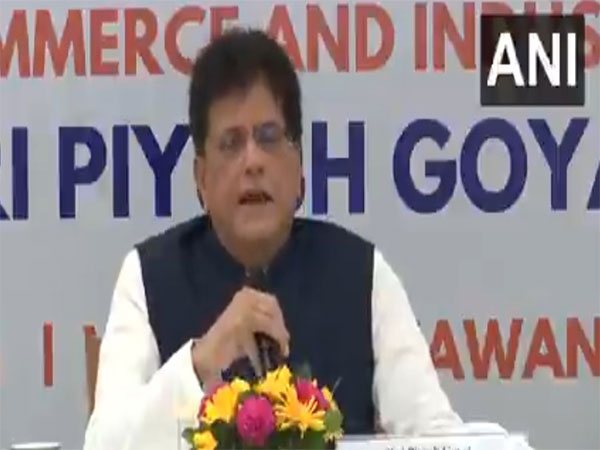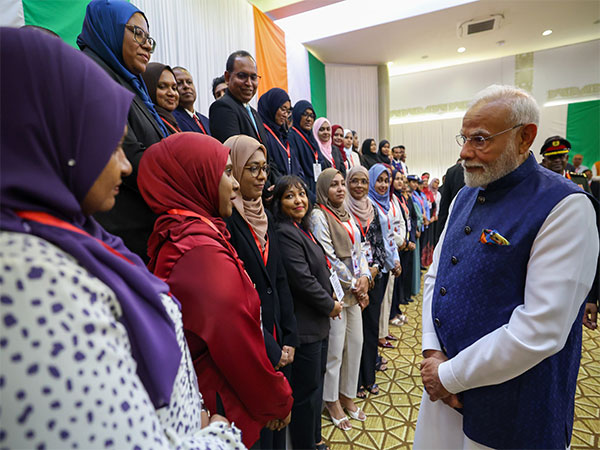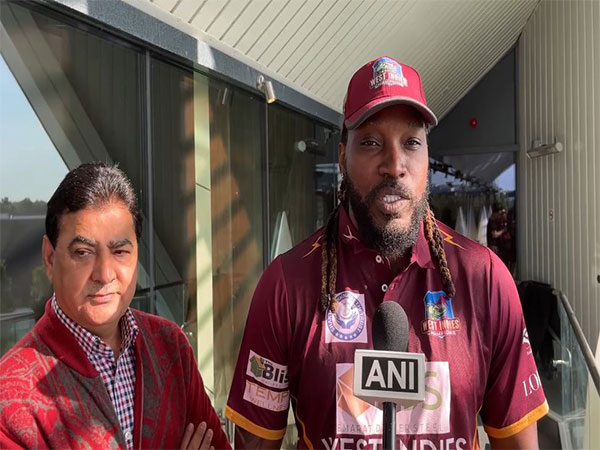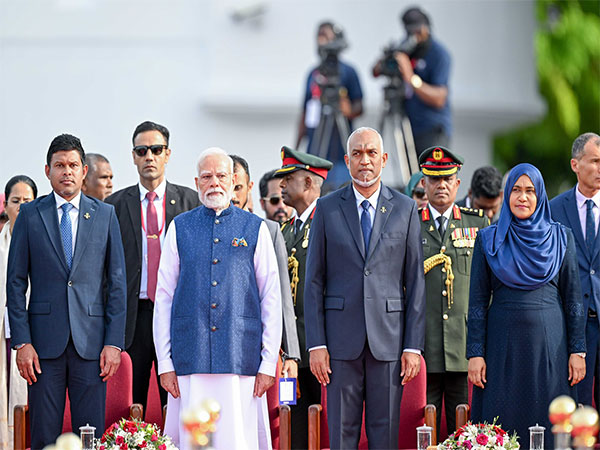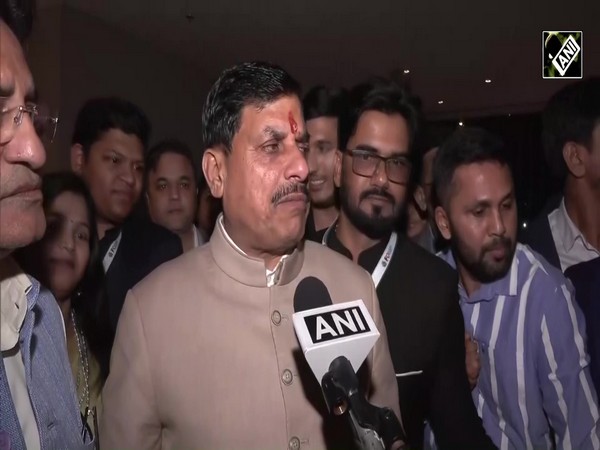Spirit of Janmashtami: JKYog and RKT Dallas celebrate Indian devotional music and dance
Aug 10, 2020

New Delhi [India], Aug 10 (ANI/NewsVoir): The JKYog Worldwide headquarters, Radha Krishna Temple of Dallas (RKT Fine Arts, Center for Cultural and Spiritual Excellence), underscores the most important element in celebrating Shree Krishna through music and dance on Janmashtami - Bhakti or devotion to God.
JKYog Founder, Swami Mukundananda, is a senior disciple of Jagadguru Shri Kripaluji Maharaj. He preaches the true knowledge of Yog as per the Vedas. Millions worldwide have been transformed by his simple and deep lectures.
"Service is the expression of love. When we understand that and develop this service attitude to God, everything will fall in place," said Swami Mukundananda.
Indian classical music and dance forms are an expression of this Bhakti or total involvement in God, with an intention to please him. Indian music theory originated in the Samaveda, one of the four Vedas (authoritative texts on spiritual knowledge).
Hindustani and Carnatic classical music traditions evolved from here. In the 1400s, there was a massive Bhakti movement in India, spearheaded by Shri Chaitanya Mahaprabhu, who popularized "Sankirtan" as the most effective way to achieve God-realization.
The movement also spread the importance of Bhakti among the masses through compositions in Indian languages other than Sanskrit by saints like Mirabai, Tulsidas, Vidyapati, Thyagaraja etc.
Jagadguru Shri Kripaluji Maharaj, a Vedic scholar of gigantic proportions and Swami Mukundananda's spiritual master, was a renowned Bhakti saint. He composed 1008 devotional songs in the language of Braj, highlighting the selfless loving pastimes of Shree Radha Krishna and the humble residents of Vrindavan.
Set in haunting melodies based on various Hindustani classical ragas, the "kirtans" as they are called evoke sublime devotional sentiments in the hearts of listeners and are usually sung accompanied by instruments such as harmonium, Tabla, Dholak, and Manjira. The Radha Krishna Temple of Dallas Janmashtami Mahotsav will feature these nectarine kirtans.
The rich classical dance traditions of Bharatanatyam, Odissi, Kathak, etc. find their origin in the Natya Shastra, a comprehensive treatise on performing arts, by Bharata Muni.
According to the Natya Shastra, the goal of the arts is to enable the performer and the audience to experience a higher state of consciousness and spiritual joy.
Indrani Mukherjee is an Indian Classical Vocalist, an exponent of Khayal (Kirana - Rampur style) and Thumri (Purab Ang). Her great artistic repertoire and exceptional aesthetic sensibility leaves an indelible impression in the minds of her audiences and critics alike Mukherjee, an "A" Grade in AIR, ICCR Empaneled Hindustani Vocal Artist, outstanding category in Festival of India in Abroad, has performed at major concerts and festivals in India and worldwide, and is performing at the Janmashtami Mahotsav.
She concurs, "The process of your Sadhana or musical practice is necessary and takes you up to a point. After that point one just must surrender to a higher power and let spontaneous creativity take over. One eventually reaches unconscious competence, where one feels that the source of the music is from somewhere else. The Raga is the color or the emotion that one uses to connect to the divine together with the Sahitya or the lyrics. No matter what you sing, be it a Dhrupad or a Khayal or a Thumri, the end of any musical expression is Bhakti. That is when it touches people and brings a steady, never-ending joy or Ananda."
Internationally renowned Odissi exponent, Vidushi Debamitra Sengupta (ICCR empaneled artiste, disciple of Padmavibhushan Late Guru Shri Kelu Charan Mahapatra), is also performing at the JKYog Global Janmashtami Mahotsav.
She has brought to life through Odissi, the dying art form of Padabali Kirtans from Bengal highlighting the Raas-Leela - an esoteric pastime of Shree Krishna that symbolizes the highest spiritual truth of selfless divine love. She received production grants from Ministry of Culture, Govt. of India for her unique choreography in this ballet.
"My grandmother was a Kirtan singer and a Rabindra Sangeet exponent. Kirtan is a distinct devotional style of music that touches all and it runs in my family. Additionally, I fell in love with Odissi at a young age due to its deep devotional quality and realized there is nothing more I wanted to do with my life. It gives me continual joy to combine these art forms and unique rhythms from Bengal and Odisha, in service to the divine - a joy where commercial return does not even figure," said Vidushi Debamitra Sengupta.
Vidwan Sikkil C. Gurucharan, is a youth ambassador for Carnatic music, featured in India Today's 35 under 35 game changers. He is a recipient of the Fulbright Nehru Excellence Award and a 51st Grammy Awards nominee for the collaborative effort - Contemporary Jazz Album "Miles from India".
"For me music itself is devotion, a process of internal discovery and a rare, perfect synchronicity between thoughts and musical expression. Being a musician has enabled me to adopt equanimity through all situations. Creating a good experience for the audience is important to me. During this pandemic, I miss the live audience experience, where you get continual feedback during concerts," said Vidwan Sikkil C. Gurucharan.
"I am happy that organizations like JKYog and others are providing opportunities for virtual live concerts. Particularly, I am excited about rendering the Ashtapadis of Jayadeva and the Tarangams of Sri Narayana Teertha on Janmashtami Mahotsav, in service to Lord Krishna for the benefit of devotees worldwide," he added.
The concept of Bhava is greatly emphasized in Indian performance art forms. Mohiniattam exponent Vidushi Dr. Deepti Omchery Bhalla (Sangeet Natak Akademi awardee/ICCR empaneled artiste - outstanding category) explains, "Sangeet as a concept in Kerala is a holistic experience consisting of instruments, music, and dance. Music is the most important component of dance consisting of words, Ragas, and Talas (rhythms) that evoke Bhava. Bhava is an extremely important aspect of dance - particularly the Sattvika Bhava, originating from Sattva Guna, a divine quality, which arises out of an internal devotional state of being in the performer."
"Mohiniattam with emphasis on Sattvika Abhinaya portrays all Bhavas with extreme control and restraint. The graceful and delicate body movements not only reflect the natural ambience of the region of coconut palm trees and swaying paddy fields, but also the religious attitude adopted in general by the people. With compositions largely based on Lord Padmanabha/Vishnu/Shree Krishna, the expressions remain subtle, exercising restraint as a mark of respect and devotion to Lord Vishnu. This cannot be achieved without a mind deeply submerged in devotion," he added.
The emotion of devotion or Bhava is what distinguishes a great performance from others. It also impacts the musician or dancer putting them into a somewhat blissful, meditative state.
Vidwan Dr. Vijaykumar Krishnan (Carnatic musician, music teacher/researcher, winner of Kasturi Ranga Iyengar Memorial award, Music Academy Madras), has accompanied great singers such as Dr. Balamurali Krishna, Shri Neyveli Santhanagopalan etc.
"I personally connect with God through music and it gives me joy. However, when on stage, I feel that music is a joint experience of prayer involving both the performer and the audience, where the audience silently, yet palpably, reciprocates the performer's interpretation of the song. Music therefore is an act of service, one cannot perform just for oneself," said Vidwan Dr. Vijaykumar Krishnan.
As a center for spiritual and cultural excellence, the Radha Krishna Temple of Dallas, aims to bring back through performances by top notch artistes, the true purpose of Indian classical music and dance - to elevate the soul towards selfless love for God and thereby all of humanity.
This story is provided by NewsVoir. ANI will not be responsible in any way for the content of this article. (ANI/NewsVoir)



